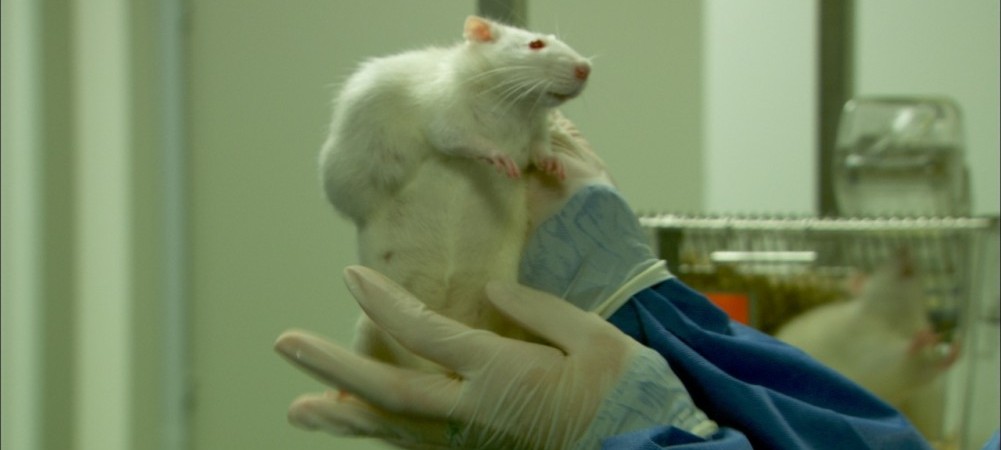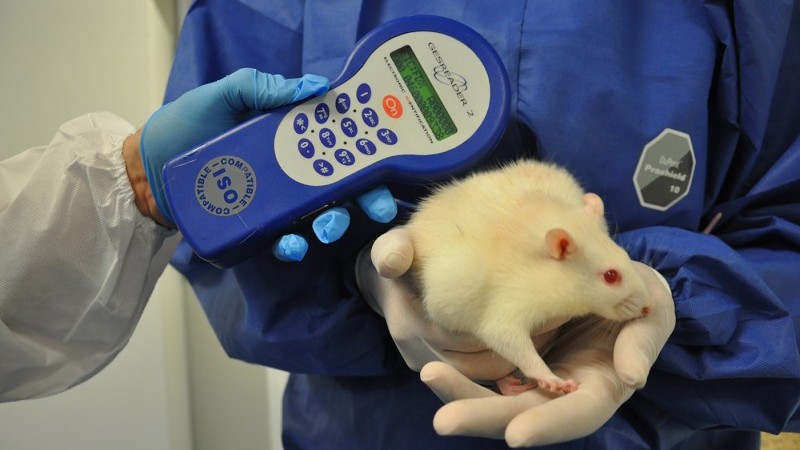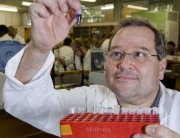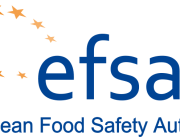Hundreds of studies should be permanently removed from the scientific literature, but the Séralini study is not one of them, say two professors at Georgetown University Medical Center.
Rounding up scientific journals
Adriane Fugh-Berman and Thomas G. Sherman, Bioethics Forum, Jan 10 2014
http://www.thehastingscenter.
org/Bioethicsforum/Post.aspx? id=6684&blogid=140&utm_source= constantcontact&utm_medium= email&utm_campaign= bioethicsforum20140110 (links to sources at the url above)
Scientific journal publishing reached a low point in November, when the journal Food and Chemical Toxicology retracted a study by Gilles-Eric Séralini and colleagues at Caen University in France. The study, published in November 2012, assessed the effect of feeding rats corn genetically modified to withstand treatment with Monsanto’s herbicide Roundup for two years (that is a lifetime in rat years). Small amounts of Roundup were added to the diet of one group of rats.
The purported advantage of genetically modified “Roundup-ready” crops is that herbicide can be spread directly on crops, killing weeds but not the crops. Most previous animal studies had found no ill effects of genetically modified crops, but Séralini found that animals that ate the genetically modified corn or ate Roundup itself developed more cancers and died earlier than control animals.
A sustained and vitriolic attack on Séralini’s paper began within hours of publication. Thirteen letters to the editor were published in the journal, accusing the authors of a multitude of errors including using the wrong strain of rats, using the wrong number of rats, and animal cruelty for allowing tumors to grow to a large size. Fraud was implied. The authors wrote a comprehensive, reasoned response, and that should have been that.
Instead, a year after publication, the journal announced that it was retracting the study.
According to SpinWatch, a European muckraking organization, 11 of the authors of letters to the editor slamming Séralini’s study had undisclosed financial relationships with Monsanto. In 2013, Paul Christou, the editor of Transgenic Research, coauthored an attack on Séralini and the FCT editors in his own journal, calling for a retraction of the study. Christou did not disclose his multiple conflicts of interest, including being an inventor on patents on GM crop technology, many of which Monsanto owns. Meanwhile, back at Food and Chemical Toxicology, a new position for an associate editor was filled by Richard E. Goodman, a University of Nebraska professor who previously worked for Monsanto, and who has a longstanding association with the industry-funded International Life Sciences Institute (ILSI). Months later, Elsevier, FCT’s publisher, announced the retraction.
The quality of Seralini’s work aside, the process by which his paper was retracted reeks of industry pressure. The progression of science is not the least bit linear, but the process has to proceed unencumbered by censorship of unpopular or commercially disadvantageous results. The peer review process is imperfect – there are countless bad studies in the medical literature – but peer review works best when the efforts of reviewers and editors are devoid of conflicts of interest and outside pressures. The self-correcting nature of science can only work when industry does not taint the process.
According to the Committee on Publication Ethics, a group that advises medical editors and publishers on ethical issues, particularly, how to handle cases of research and publication misconduct:
Journal editors should consider retracting a publication if:
- they have clear evidence that the findings are unreliable, either as a result of misconduct (e.g. data fabrication) or honest error (e.g. miscalculation or experimental error)
- the findings have previously been published elsewhere without proper crossreferencing, permission or justification (i.e. cases of redundant publication)
- it constitutes plagiarism
- it reports unethical research.
There are hundreds of studies that should be permanently removed from the scientific literature, but the Séralini study is not one of them. The FCT retraction announcement very clearly states: “Unequivocally, the Editor-in-Chief found no evidence of fraud or intentional misrepresentation of the data” – and then goes on to say, incredibly, that the study is being withdrawn because the journal’s own review of the primary data show that the results are inconclusive.
Inconclusive? Until a hypothesis is proven, all results are inconclusive.
It would have been perfectly appropriate for the journal to have written an editorial expressing its concerns. Instead, it seems the editors may have succumbed to industry pressure to do the wrong thing. The media coverage in the U.S. has been one-sided; criticism of Séralini’s study has been widely covered in mainstream press, while information about the conflicts of interest of critics have remained in the alternative press.
Anecdotally, we have heard several stories of journal editors being pressured by industry to suppress publication of papers that cast a commercial product in a poor light. How often does this intimidation occur? It would be a service for the editors and writers involved to make these stories public. Industry should not be allowed to intimidate medical and scientific journals, and journal editors need to have a united front against industry influence and a unified strategy on how best to combat it.
The retraction of the Séralini study is a black mark on medical publishing, a blow to science, and a win for corporate bullies.
Adriane Fugh-Berman MD and Thomas G. Sherman PhD are associate professors in the Department of Pharmacology and Physiology at Georgetown University Medical Center (GUMC). Dr. Fugh-Berman directs PharmedOut, a research and education project that promotes rational prescribing. Dr. Sherman chairs the Graduate Advisory Committee at GUMC and teaches medical and graduate courses in biochemistry, genetics and nutrition.













































































Let the human race doom itself with carcinogens and bullies? But one publication can take down an industry. This publication might did just that.
Paul Christou, Richard E. Goodman, and their ilk ….well aren’t they nothing but a friggin bunch of rats!!!
Most of the problems in genetic engineering will probably be solved by paradigm advances in physics in string theory.
The main problem the Food and Chemical Toxicology Editor claimed was the reason for the extraction of Dr. Seralini, PhD.’s article was the use of only 10 rats per male and female groups.”Concerning the statistical power in a t test at 5%, with the comparison of 2 samples of 10 rats, there is a 44% chance to miss a significant effect of 1 standard deviation (SD; power 56%)(1.)
However, Dr. Seralini’s, extracted research design was nearly identical with Monsanto’s animal feeding studies for NK 603, MON 810, MON 863 [Sprague-Dawley albino strain, with 10 rats per gender group]. But Monsanto’s designs were only 90 days, while Dr. Seralini’s design found rats fed Round up Ready’s glyphosate for 2 years, developed cancer tumors.
Thus Monsanto’s NK 603, MON 810, MON 863 corns, ethically should be time wise/intelligently recalled [extracted] because their experimental safety design has a 44 % chance the corn could be toxic. In fact Dr. Seralini did a more competent statistical analysis of Monsanto’s original studies, and found indeed Monsanto’s lab rats had signs of liver and kidney diseases (2.).
There are many other peer reviewed research studies showing Monsanto’s paradigm is flawed and dangerous. Here are just a few.
According to the Journal of Insect Conservation and Diversity, published in 2012, By Dr. Brower, PhD., and replicated in the Journal of Insect Conservation and Diversity, published in 2012, by Dr. Oberhauser , PhD., 90 % of Midwest milkweed has been destroyed inadvertently by glyphosate. A subsequent 80% of the Midwest monarch butterfly population has been decimated.
According to a study published in Entropy, 2013 (3.), glyphosate is connected to gastrointestinal disorders, obesity, diabetes, heart disease, depression, autism, infertility, cancer and Alzheimer’s disease. There are over 250 research articles cited in this review article.
Medical research published in Chemical Research in Toxicology, shows glyphosate and glyphosate based herbicides, “interfere with key molecular mechanisms regulating early development in both Xenopus and chicken embryos, leading to congenital malformations… The phenotypes obtained after GBH treatments or injections of glyphosate alone are strikingly reminiscent of those observed as a consequence of an excess of RA signaling in vertebrates and humans,” exposed to aerial glyphosate and spraying (4.).
An approximated 0.07368 parts per million (ppm) of herbicide glyphosate were found in Canadian non-pregnant women’s blood. These women live in cities away from farms. Worst of all, trace amounts, 0.00014 ppm, of the corn’s GE bacterial insecticide, Bt-Cry1Ab, were found in the fetuses of Canadian pregnant women, according to Reproductive Toxicology, published in 2011 (5.). This is the area of highest danger in Monsanto’s flawed paradigm: damage to the human fetus and/or fetal DNA mutations from exposure to Monsanto’s herbicides and insecticides.
The study which was extracted has incredible statistical analyses, useful for teaching fast track high school seniors destined for DNA research: multivariate analysis, principal component analysis (PCA), partial least- squares to latent structures (PLS), and orthogonal PLS (OPLS). This study should be reintroduced into Food and Chemical Toxicology, as a “blueprint” design for the benefit of humanity. A minimum 100 replications should be made by scientists like Dr. Seralini, who are not funded by biotech corporations, using the same design but especially with large rat samples, 100 to 1,000 per gender group.
Digital PCR should be used in all US hospitals to precisely quantify how many of all of Monsanto’s copyright toxins are in human blood. Correlations and potential co-morbidity variables can thus be established, especially for pediatric illnesses.
Safety first.
Will M. Davis
Retired school teacher
References:
1. de Vendomis JS, et al, A comparison of the Effects of Three GM Corn Varieties on Mammilian Health. Int J Bio Sci 2009; 5970: 706-726.
2. . de Vendomis JS, et al, A comparison of the Effects of Three GM Corn Varieties on Mammilian Health. Int J Bio Sci 2009; 5970: 706-726.
3. Entropy 2013, 15(4), 1416-1463; doi:10.3390/e15041416 Review
4. Paganelli, A., et al., Glyphosate-Based Herbicides Produce Teratogenic Effects on Vertebrates by Impairing Retinoic Acid Signaling Chem. Res. Toxicol. 2010, 23, 1586–1595.
5. Reprod Toxicol. 2011 May;31(4):528-33. doi: 10.1016/j.reprotox.2011.02.004. Epub 2011 Feb 18.
Thank you Will… Very well put and easy to understand!!
There’s just one line in this which needs correction:
“Most previous animal studies had found no ill effects of genetically modified crops..”
The industry trials in question were too short and were not safety tests, but tested only industrial parameters like quick weight gain. (They also often include bogus data groups intended to drown out any evidence of hazard which did arise.) But in spite of this, these trials usually did give evidence of toxicity. This evidence was flippantly dismissed by the corporations and regulators.
That’s how Seralini got started with this in the first place. For years he wrote that the evidence of the industry’s own trials was troubling enough that what was needed was a full-duration study (two years, the full life cycle of the rat) which was designed as a toxicology study. Finally he and his team ended up conducting such a study themselves, which is the one published in 2012. It’s a sound study, and by far the best ever done on a GMO.
Meanwhile Food and Chemical Toxicology stands by a patently bogus pro-GM “study” it published in January 2013, an evident rush job meant to “answer” Seralini, which ran for the usual bogus 90 days, had only one experimental group, and used secret statistical methodology.
http://www.gmwatch.org/index.php/news/archive/2014/15261-biologist-accuses-journal-of-double-standards-over-seralini-study-retraction
We can see what a Monsanto-hijacked fraud this journal is.
Food and Chemical Toxicology extracted a study, because the editors claim the study was inconclusive because it used only 10 rats per gender and because they used rats of the Sprague-Dawley albino strain. However, it easy to see this extraction procedure was irrational.
The FCT retraction announcement very clearly states: “Unequivocally, the Editor-in-Chief found no evidence of fraud or intentional misrepresentation of the data” – and then goes on to say, incredibly, that the study is being withdrawn because the journal’s own review of the primary data show that the results are inconclusive.
Thus the high incidence of cancer tumors was not due to fraud, but due to some other variables. This brilliant study clearly mathematically defines the parameters of its statistical analysis, leaving nothing inconclusive about the variables it analyzes. For example, “Only models with an explained variance R squared (Y) > or = 80%, and a cross validated predictive ability Q squared (Y) > or = 60 %, were used for selection of the discriminant variables.”
We see the authors of this original ethical study, have clearly explained to any reader, regarding the discriminant variables, the actual statistical limitations of samples of 10 rats. The authors also remind us that replications are required.
Regarding the high level of tumors. The study says, “All treatments in both sexes enhanced large tumor incidence by 2-3 fold in comparison to our controls but also for the number of mammary tumors in comparison to the same Harlan Sprague-Dawley albino (Brix et al. 2005), and overall around 3-fold in comparison to the largest study with 1329 Sprague Dawley female rats (Chandra et al., 1992).
We are told that the high incidence of tumors was 2-3 times higher, than for the Harlan Sprague-Dawley albino rat, with a cross validated predictive ability Q squared (Y) > or = 60 %. This a rational, precise, and meaningful conclusion which is useful information for parents, educators, .and medical physicians to protect children.
This Case Study brings out the harmful effects of GMO plants, animals and a wide variety of bacteria’s and their negative effects on the environment and human health……this study is really indeed worth reading……Ethan Hawke.
Concerning the destruction of the American monarch butterfly, and other species, which represent examples of chaos theory from the random side effects of unregulated genetic engineering and the use of glyphosate. “Mathematical order is found everywhere in creation. There is nothing outside the range of Mathematics, so nothing can challenge it. Even perfect disorder can be quantified mathematically (Theory of Random Processess.), “said His Holiness Maharishi Mahesh Yogi. (1.)
Isolating the variables which cause destruction to the lab rats in Seralini’s study, which was published in Food and Chemical Toxicology, is a legitimate mathematical process, which requires a number of steps of replication, including the publication of Seralini’s research.
The study in Food and Chemical Toxicology was a 4th replication of Monsanto’s experimental design, for MON 810, NK 603, Mon 863 GE corns. It was a second replication for Monsanto’s study for NK 603.
“Confirmation comes from repetition…. Repetition is the basis for judging… significance and confidence.” (Tukey, 1969, pp. 84-85)
“Given the problems of statistical induction, we must finally rely, as have the older sciences, on replication.” (Cohen, 1994, p. 1002)
In a probability density function, a shrinking probability value rules out other variables.
It may be possible to increase the statistical power of the possible effect [gender dependent kidney and liver diseases] from the two independent variables [the genetically engineered over expression of EPSPS in NK 603, or residual glyphosate], by combining analysis of Monsanto’s NK 603 study with Seralini’s NK 603 study. Perhaps meta-analysis can be used.
The US Geological Survey published significant amounts of Roundup glyphosate were detected in about half of Midwest rain water and air samples (Capel 2011).
Never the less, the USDA, EPA, and Monsanto could work together to create non-herbicide perimeter zones around all US farm homes, and around all US Midwest communities. This will protect humans, and allow for the regrowth of milkweed for a last ditch effort to save the American monarch. This could also help reverse the US bee colony collapses from neonicotinoids, which Monsanto uses on their corn.
US students, the real American monarchs, appear to be on the verge of academic “extinction” relative to Shanghai and European students (2.). American PISA scores have diminished in a similar fashion to the numbers of monarch butterflies. Could it be American students are consuming too much glyphosate, over expressed EPSPS, neonicotinoids, and Bt-protein insecticides, etc., through the food chain, relative to Shanghai and Europe?
References:
1. His Holiness Maharishi Yogi, Maharishi’s Absolute Theory of Defense, Maharishi Vedic University, India 1996, ISBN 81-7523-000-2.
2. Dillon, T. (December 7, 2010) Top Test Scores From Shanghai Stun Educators, Education Section, New York
Times, A1 of New York Edition. page A1, New York edition.
The following paradigm flaw in transgene protein and hormone expression may explain the cause of sick rats in Dr. Seralini’s and Monsanto’s NK 603 corn studies.
According to the Journal of Agricultural and Food Chemistry, published in 2005 (1.), the process of expressing a bean protein in a different species, a pea, adds extra sugar molecules. Only mice eating these peas developed lung disease in this study. Plos One, published a study, January 9, 2013, discovering these sugars may be responsible for intensifying the lung disease, if the lung disease is actually caused by other factors.
A similar change in molecular structure, as occurs for αAI proteins, may occur when a human protein (humanTrx1) is expressed in mice, creating increased lethality among mice infected with H1N1.
This study compares transgenic mice expressing the human protein (humanTrx1) compared to controls, wild type mice (WT), with both groups infected with H1N1. The transgenic mice with a human protein, have increased mortality’s (Go Y-M 2011)(2.).
International genome and chromosomal mapping of all DNA must be complemented with protein and hormone immumoplot signatures from mass spectroscopy.
The horizontal axis is the mass to charge ratio (m/z) in Daltons. The vertical axis is the abundance of ions in the sample for a specific m/z value.
Dr. Jim Yong Kim, President of the World Bank, emphasizes the importance of measuring and detecting co-morbidity variables in the 2010 Lancet Burden of Disease Report. Co-morbidity variables include examples such as neurological illness and H1N1 pediatric fatalities; and lung disease and H1N1 fatalities.
Dr. Seralini’s study, essentially replicating an experimental design of a biotech corporation, with time trial extended from 90 days to 2 years, found cancer tumors and/or hepatorenal illness in mice eating NK603 corn. This corn is engineered to over express a modified EPSPS, an enzyme, which is an amino acid chain, which could also be analyzed by immumoplot analysis for a signature of spikes. This signature may perhaps be correlated to the modified EPSPS enzyme’s molecular structure, and possibly be correlated to the cancer tumors, disease symptoms and high morbidity rates of the albino Sprague-Dawley rats, consuming this enzyme. This 2 year study also includes some rat groups eating Monsanto’s herbicide, glyphosate.
The required immunoplot analysis of EPSPS, when expressed in NK603, will perhaps be similar to the following analysis in this recently published abstract: “Patients with melanoma metastatic to regional lymph nodes exhibit a range in tumor progression, survival, and treatment. Current approaches to stratify patients with this stage of disease predominantly involve clinical and histological methods. Molecular classification thus far has focused almost exclusively on genetic mutations. In this study, proteomic data from 69 melanoma lymph node metastases and 17 disease free lymph nodes acquired by histology-directed MALDI imaging mass spectrometry were used to classify tumor from control lymph node and to molecularly sub-classify patients with stage III disease. From these data, 12 survival associated protein signals and 3 recurrence associated signals in the acquired mass spectra were combined to generate a multiplex molecular signature to group patients into either poor or favorable groups for recurrence and survival. Proteins represented in the signature include cytochrome c, s100 A6, histone H4, and cleaved forms of thymosin β-4, thymosin β-10, and ubiquitin. In total over 40 protein signals from the tissue were identified (Hardesty 2012).”
Unified field string theory can provide more comprehensive solutions to genetic engineering. Until then the risky and unsafe GE corns and soy, etc, ethically need to be retracted. Organic farming and non-toxic biological solutions are more successful and more cost effective.
Paradigm corrections are illustrated by our current GPS system, which can only function by correcting Newton’s antiquated laws with Einstein’s field equations. This is because the clocks on the 64 faster moving GPS satellites tick sligthly slower than the relatively slower moving clocks stationed on earth.
References:
1. Prescott, V. E., et al., Transgenic Expression of Bean α-Amylase Inhibitor in Peas Results in Altered Structure and Immunogenicity. J. Agric. Food Ch 2005, 53, 9023-9030.
2. Go Y-M, Kang S-M, Roede JR, Orr M, Jones DP (2011) Increased Inflammatory Signaling and Lethality of Influenza H1N1 by Nuclear Thioredoxin-1. PLoS ONE 6(4): e18918. doi:10.1371/journal.pone.0018918
http://www.plosone.org/article/info%3Adoi%2F10.1371%2Fjournal.pone.0018918
3. Hardesty, W. M., et al., Protein signatures for survival and recurrence in metastatic melanoma. J Proteomics. Author manuscript; available in PMC 2011 September 22.
Published in final edited form as:
J Proteomics. 2011 June 10; 74(7): 1002–1014.
Published online 2011 April 23. doi: 10.1016/j.jprot.2011.04.013
“En Francais” or in plain English, “s’il vous plait,” what does this mean: “Transgenic Expression of Bean α-Amylase Inhibitor in Peas Results in Altered Structure and Immunogenicty?
We are referring to research in the Journal of Agricultural and Food Chemistry, published in 2005 (1.), in which the process of expressing a bean protein in a different species, a pea, adds extra sugar molecules. Only mice eating these peas developed lung disease in this study.
Fast track international high school science students, please think of the analogy of the Sun. It gives good health with moderate exposure, but skin cancer, with excessive exposure.
Now please think of a star which won’t support life as we know it, perhaps Betelgeuse. Every star has a “signature” black body radiation curve, with a spike high temperature Kelvin, and a subsequent different colored glow lined up with the high spike in the curve. Betelgeuse has a temperature spike at 3,500 Kelvin which means it has a predominant color glow of red. The sun’s signature curve spikes at 5,780 Kelvin and glows in the yellow-green spectrum. Which of these two stars supports life?
The α-Amylase protein when expressed in the bean is more like the sun. There is a mild toxicity possible with too much exposure. Similarly the Bt-toxins in corn might be alright if they were non-resilient, and broke down, before reaching the livestock. However, the Bt-toxins, genetically engineered in our corn, have been found to be so resilient, that they work their way through the food chain, and into the human mothers’ fetuses.
Much worse than that, is there is an even greater danger when transferring DNA from one species to another. For example, when the blueprint, the DNA for the α-Amylase protein, is transferred to the DNA of the pea, there is quite a bit of stress on the DNA. A coiled piece of DNA is like a worm. When it accidentally gets nicked [like cutting open DNA for DNA insertion], the worm writhes and turns in great pain. A DNA chain has the property of global superhelicity, so a stress at any one point, is transferred along, and spread through the the entire DNA coil. So when the stressed pea DNA blueprint, with an inserted piece of DNA blueprint [from another species] expresses an α-Amylase protein, it may create an altered unnatural structure (2). Unnatural sugar residues, from trans-gene expression, can make the altered protein even more toxic. It would be kind of like switching Betelgeuse for our sun: all life on earth would be destroyed.
Furthermore, the expression of the protein, may depend on a complex interaction involving information from the sequence codes along the entire DNA coil. So switching a little section of DNA, which is supposed to create a “clean” α-Amylase, to another species, adds more complexity, and may randomly create a protein with an altered toxic structure.
Toxicology labs, autopsy labs, hospital labs, and crime investigation labs, use mass spectrometry to create a signature curve which identifies each protein, or any molecule [such as narcotics] as toxic or non-toxic. In the case of corn, toxicity is determined by feeding the different variations of expressed proteins, some non-toxic, some slightly toxic, and some lethal, to rats to establish correlations. The toxic α-Amylase protein in the pea, has spikes in different positions on the mass spectrometry curve, like the signature black body radiation curve for Betelgeuse has a spike in a different position than the sun, indicating “too toxic.”
Toxicology labs use a signature curve created on the following x-y axis:
The horizontal axis is the mass to charge ratio (m/z) in Daltons. The vertical axis is the abundance of ions in the sample for a specific m/z value.
There is a curvy line on this x-y axis, which is the signature for each protein. The toxic protein has extra spikes in the curve, indicating the increased mass of attached sugar molecules, at specific unnatural positions on the protein. These sugar residues are not on the less toxic, normal α-Amylase protein, which shows no dangerous spike for sugar residues. Other molecules like phosphates, may also unnaturally attach during trans-gene expression, increasing toxicity.
It is possible, the genetically engineered over expression of EPSPS in NK 603, which involves transferring DNA from a bacteria to a different species, corn, may also create random, unreliable altered molecular structures in the corn, which are more toxic than when expressed in their own species, bacteria.
By combing two studies, each with 10 lab rats, and achieving 20 rats, it may be possible to reach a higher statistical probability, that something in the NK603 corn [over expressed EPSPS ?] is causing gender dependent liver/kidney diseases in the rats [which is found in the both the original bio tech study and Dr. Seralini’s study with the same experimental designs]. Especially by combining at least 4 studies of 10 lab rats, and achieving a 40 sample size, an ethical scientist like Dr. Seralini, can invoke the Central Limit Theorem. By using mass spectrometry, it can be determined if any altered structures in the genetically engineered corn are appearing, like unnatural sugar residues, which may be correlated to the rats illnesses and mortality’s.
Although the extracted study used only 10 lab rats, it was ethically published as a data source, so other scientists can create subsequent studies with replications, and hopefully determine causal variables, by adequate sample sizes.
Think of putting the blueprint for a steering wheel for a big truck into the assembly line blueprint of a tiny KIA. The KIA has its own blueprint for all the small parts for a small car. The blueprint for the steering wheel of the big truck, when inserted into the KIA’s blueprint, would give instructions for a larger steering wheel. Perhaps there are more nuts and bolts, created by the truck blueprint, than for the KIA. Then the KIA could leave the robotic assembly line, with a steering with too many nuts and bolts attached. This is like too many unnatural sugar residues attached to the α-Amylase protein in the pea. Both the KIA with the altered steering wheel, and the pea with added sugars increase the likelihood of a serious health disaster [car crash from failed steering wheel; and lung disease in mice from added toxic structures].
This is why everyone should eat food which has the Non-GMO Project seal with the monarch butterfly. This has been thoroughly tested to have zero or only trace levels of genetic contamination, which is safe.
References:
1. Prescott, V. E., et al., Transgenic Expression of Bean α-Amylase Inhibitor in Peas Results in Altered Structure and Immunogenicity. J. Agric. Food Ch 2005, 53, 9023-9030.
2. Backofen, R., Clote, P. Computational Molecular Biology: An Introduction. New York, NY: John Wiley and Sons 2001.
A picture is worth a thousand words. Please compare the black body radiation signature curves for suns with different temperatures and predominant glow colors, by opening this link:
http://www.bing.com/images/search?q=black+body+radiation+curve&id=FC7D1A39845D1EFF5E3ED05891587E2712D4818B&FORM=IQFRBA
Now please compare the mass spectrometry signature curves for a virtually non-toxic protein [bean] and a toxic [same bean protein expressed in pea by transferring DNA] protein, by clicking on this link and examining Figure B. Please note the peak [spike] at 4233 mass units on the signature curve [in the pea-RAI spectrum] for the toxic trans-gene protein, which has unnatural extra mass [toxic sugar residues]:
https://mail.google.com/mail/?ui=2&ik=285017afaa&view=att&th=13d8ae8f2aff77f2&attid=0.2&disp=safe&realattid=f_hejc76sy1&zw
Is it possible similar unnatural toxic structures attach to molecules when bacterial DNA is transferred to NK 603 corn DNA, as in the case of creating over expression of EPSPS enzyme, by tran-sgene expression?
Merci beaucoup.
Will Davis
Great article! Drs. Fugh-Berman and Sherman were both my professors at Georgetown, and they are amazing lecturers. I’m happy to see them stand up for fair treatment in scientific publication as well as the fight against GMOs.
In nature, physical systems like lasers are created by organizing only one percent of the photons in a light source. The 99 % less organized photons instantaneously align in quick phase transition to the organized orderly photons- creating a powerful laser. Like this only one percent of clear thinking, intelligent people like Dr. Seralini’s team can possibly cause a phase transition to a non-gmo world food source.